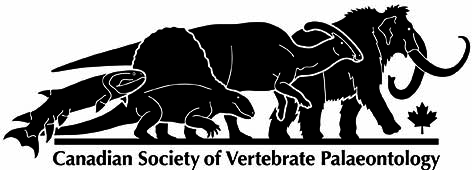A chasmosaurine ceratopsid premaxilla from the basal sandstone of the Hell Creek Formation, Montana
DOI:
https://doi.org/10.18435/vamp29366Keywords:
Triceratops, Torosaurus, Hell Creek Formation, TriceratopsiniAbstract
A well-preserved large chasmosaurine ceratopsid premaxilla (MOR 1122 7-22-00-1) collected from the basal sandstone of the Cretaceous Hell Creek Formation (HCF) represents one of the stratigraphically lowest ceratopsid occurrences in the formation. The specimen was discovered in 2000, during the excavation of a large Torosaurus latus skull (MOR 1122) which was later hypothesized to represent an advanced growth stage of the more commonly recovered HCF ceratopsid Triceratops. MOR 1122 7-22-00-1 compares favorably with the incomplete premaxillae of the MOR 1122 skull and reveals details of premaxilla morphology from this stratigraphic zone. It preserves large, closely spaced ventromedial foramina, a narrow triangular process, and a thin septal flange at the base of the narial strut. The nasal process is narrow, caudally inclined and has a forked dorsal surface which appears to represent an intermediate between the morphology expressed in the slightly stratigraphically lower ceratopsid Eotriceratops xerinsularis from the Horseshoe Canyon Formation of Alberta and specimens recovered higher in the HCF. MOR 1122 7-22-00-1 expresses a deep recess extending medial to the strut of the triangular process, a feature shared with other HCF ceratopsid specimens but not Eotriceratops or other earlier occurring triceratopsin taxa. The morphology of MOR 1122 7-22-00-1 is consistent with noted stratigraphic trends in HCF ceratopsids and highlights the increased complexity of the narial region in uppermost Cretaceous triceratopsins.
Downloads
Downloads
Published
How to Cite
Issue
Section
License
Copyright (c) 2020 John Scannella

This work is licensed under a Creative Commons Attribution 4.0 International License.
Submission of an article to Vertebrate Anatomy Morphology Palaeontology will be taken to mean that the article is an original work and not previously published or under consideration for publication elsewhere.
If the article is accepted for publication, it will be published on-line under Creative Commons Attribution 4.0 International (CC By 4.0) meaning:
Attribution — You must give appropriate credit, provide a link to the license, and indicate if changes were made. You may do so in any reasonable manner, but not in any way that suggests the licensor endorses you or your use.
No additional restrictions — You may not apply legal terms or technological measures that legally restrict others from doing anything the license permits.







